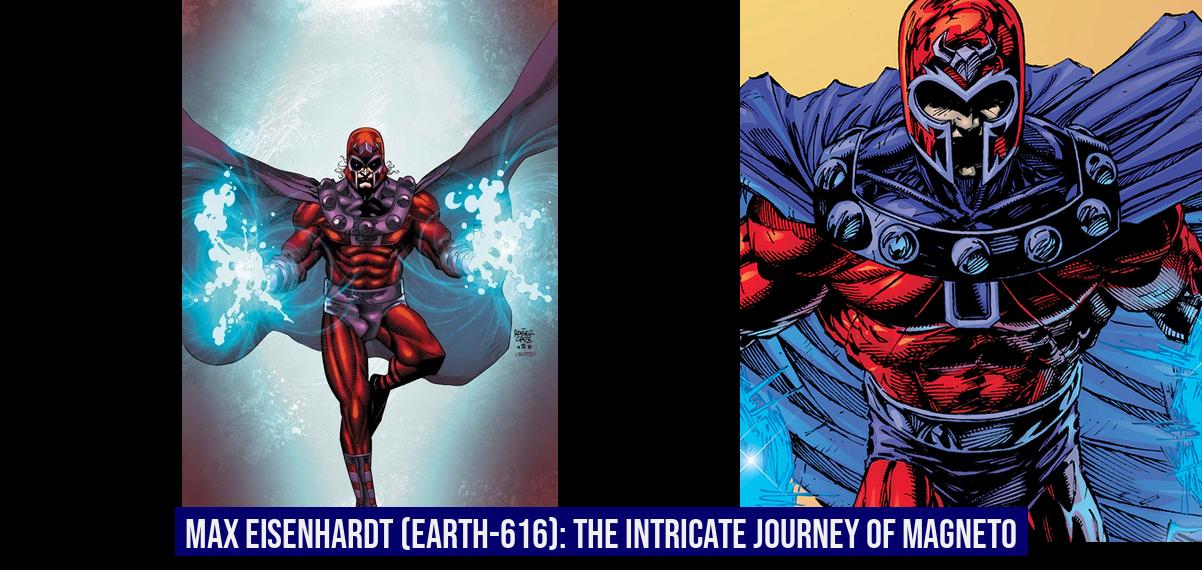Max Eisenhardt (Earth-616): The Multilayered Complexity of Magneto
Max Eisenhardt, often cloaked in his alias Erik Magnus Lehnsherr, stands as one of the most riveting and complicated figures in the Marvel Universe. Commonly recognized as Magneto, the master of magnetism, his relentless journey from a victim of heinous atrocities to a formidable champion of mutantkind proves both captivating and tragic. This article delves into the life of a man who navigated the blurred lines between heroism and villainy, seeking to illuminate the path that shaped his destiny.
The Early Years: A Life Marked by Tribulation
Born into a modest Jewish family in Nuremberg, Germany, Max Eisenhardt’s formative years were enveloped in love and innocence. His teenage pursuit of a young Romani girl, Magda, exemplified this innocence—a simple love story against the backdrop of looming darkness. However, as the Nazis waged a campaign of hatred and violence, the world became hostile to him and his family.
Max’s early encounters with brutality served as a prelude to greater suffering. Witnessing his uncle assaulted during a Nazi rally and being falsely accused of cheating during a school competition illustrated humanity’s descent into bigotry. These experiences marked a pivotal shift in Max’s life, compelling him to become a smuggler in the Warsaw ghetto, aiming to survive the horrors of World War II.
A Holocaust Survivor: The Awakening of Powers
Imprisoned in the infamous Auschwitz concentration camp, Max’s identity morphed amidst horrendous conditions. The brutal reality of his environment redefined his understanding of humanity. In 1944, witnessing the grotesque experiments conducted by figures like Josef Mengele, Max’s horrific experience culminated in a transformation that would forever change him: the awakening of his mutant abilities.
His reunion with Magda within the confines of the camp echoed both hope and despair as they plotted an escape. They found respite in a secluded village following their narrow escape from the gas chambers, but tranquility was short-lived. The tragedy of losing their daughter Anya would serve as the final straw, igniting within Max a powerful desire for retribution.
The Evolution of Magneto
When he became the formidable Magneto, the complexities of Max’s character began to rise to the forefront. Fuelled by unbearable pain and loss, he swore a path of vengeance against humanity—a decision reflecting his belief that peace between mutants and humans was impossible. Magneto proclaimed the superiority of mutants, branding himself as a protector of “Homo superior.” His philosophical conflict with Charles Xavier, an advocate for coexistence, forged a lasting rivalry.
Magneto’s charisma and strong leadership established him as the head of the Brotherhood of Evil Mutants, where he often found himself in violent confrontations with the X-Men. However, his relationships—especially with his children, Quicksilver and Scarlet Witch—added depth to his character, showcasing his duality as both a ruthless adversary and a caring father.
A Complex Legacy
Throughout his life, the notion of power and responsibility danced in a precarious balance for Magneto. On multiple occasions, he exhibited a willingness to align himself with Xavier’s ideology and even expressed desire for peace. His recent tenure on the island nation of Krakoa signifies a potential new chapter shaped by unity rather than division. Even under the weight of past atrocities, Max strives to redefine his identity and embrace a cooperative future.
Lessons from Max Eisenhardt’s Journey
- Understanding Tragedy: Max’s life narrative imparts the importance of recognizing human suffering, as it is through understanding that empathy can blossom.
- Identity and Transformation: The evolution of Max Eisenhardt into Magneto showcases how trauma can reshape an individual’s identity and political standpoint.
- Power Dynamics: Magneto’s philosophy raises critical discussions about power, its ethical implications, and the responsibility that comes with it.
Conclusion: The Man Beyond Magneto
The journey of Max Eisenhardt captivates readers not merely for his superhuman abilities but for the profound insights into the human condition it reflects. As a representation of resilience amid hardship, he embodies a struggle echoing far beyond the comic pages. His ongoing evolution challenges us to confront our perceptions of good and evil, urging an understanding that power is both a gift and a burden.
Max Eisenhardt, a name that resonates with tragedy and triumph, continues to reshape the narrative for both mutants and humans alike—a testament to the deeply interconnected fates within the Marvel Universe.
Who is Max Eisenhardt in the Marvel Universe?
Max Eisenhardt, also known as Erik Magnus Lehnsherr, is a complex character recognized as Magneto, the master of magnetism. His journey from a victim of atrocities to a champion of mutantkind highlights the blurred lines between heroism and villainy.
What significant events shaped Max Eisenhardt’s early life?
Born into a Jewish family in Nuremberg, Germany, Max’s early life was marked by love and innocence. However, the rise of the Nazis led to brutal experiences, including witnessing his uncle’s assault and being falsely accused of cheating, which compelled him to become a smuggler in the Warsaw ghetto during World War II.
How did Max Eisenhardt’s powers awaken?
Max’s mutant abilities awakened while he was imprisoned in Auschwitz concentration camp. The horrific conditions and witnessing grotesque experiments led to a transformation that would define his identity as Magneto.
What is the relationship between Magneto and Charles Xavier?
Magneto and Charles Xavier share a philosophical conflict regarding the future of mutants and humans. While Xavier advocates for coexistence, Magneto, fueled by pain and loss, believes that peace is impossible and positions himself as a protector of mutant superiority.

